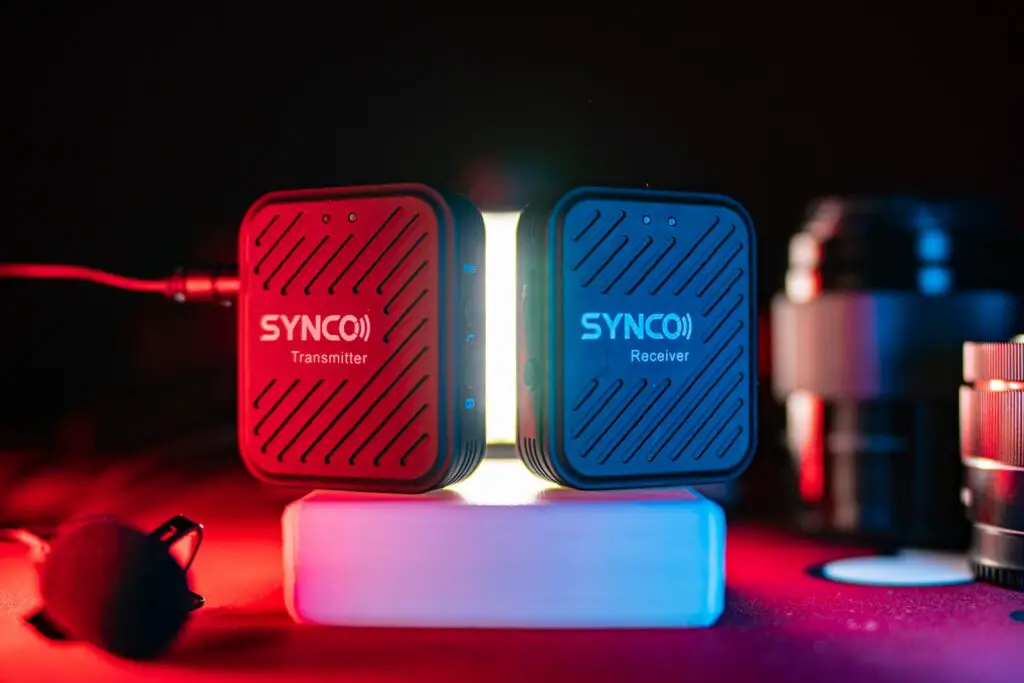Wireless microphones have become a staple in the entertainment industry, enabling performers and speakers to move around the stage without being tied down by an onstage microphone.
The frequency range is an important consideration for using multiple wireless microphones. Wireless microphones operate on specific frequency bands, and using too many microphones within the same frequency range can cause interference and result in poor sound quality.
Different frequencies experience varying levels of interference which may limit how many microphones can be used simultaneously.
So, the answer to this question of how many wireless microphones can be used at once depends on several factors.
These factors include the frequency range of microphones, the wireless system used, and the environment.
Certain wireless microphone systems – digital or analogue – have different capacities when handling multiple microphones simultaneously.
Determining the Maximum Number of Wireless Microphones for Simultaneous Use
Wireless microphones have become increasingly popular in recent years due to their ease of use and versatility.
They are widely used in various settings, including live performances, public speaking events, and recording studios.
However, their functionality heavily depends on radio frequencies (RF) for transmitting audio signals from the microphone to the receiver.
Wireless microphones operate on various frequency bands, including VHF and UHF, depending on their intended use and specifications.
These microphones work by converting sound waves into electrical signals, which are transmitted to a receiver through the airwaves using RF technology.
Generally, around 4-6 wireless microphones can be used concurrently without interference.
Still, this number can vary based on the presence of other RF devices, such as cordless phones or baby monitors nearby.
If multiple wireless microphones are used nearby, they can interfere with each other, resulting in signal degradation or loss.
Wireless microphones are valuable for many applications, but their effectiveness relies heavily on RF technology.
To avoid interference and ensure optimal performance, it is important to understand the limitations of wireless microphones and consult with local experts to determine the maximum number that can be used in a given location.
Factors Affecting The Number Of Wireless Microphones That Can Be Used At Once
Wireless Microphone Frequency
The frequency on which wireless microphones operate is a crucial factor that affects the number of microphones that can be used simultaneously.
Two primary frequency ranges are available for wireless microphones: UHF (ultra-high frequency) and VHF (very high frequency).
Wireless microphones operating on UHF are less susceptible to interference than those operating on VHF, mainly because they use a distinct wavelength.
Receiver Make And Model
The make and model of the receiver determine the number of channels available, typically ranging from two to eight.
A greater number of channels enable the usage of multiple wireless microphones simultaneously.
Furthermore, single-frequency receivers only support one microphone simultaneously, while multiple-frequency receivers can simultaneously accommodate multiple microphones.
Interference In A Specific Area
When using wireless microphones, the number of microphones that can be used simultaneously may be limited by local interference caused by devices like baby monitors, cordless phones, microwaves, and Wi-Fi routers.
To address this interference issue in specific areas, additional receivers may be necessary to shield each microphone’s signal from nearby devices and ensure optimal performance.
Doing this helps address interference issues in specific places while enabling multiple microphones to be used without disruption.
How Can An Individual Link Four Microphones?
An audio interface with multiple XLR inputs is usually the best solution when connecting multiple microphones.
Connecting each microphone directly to an available XLR input on the interface via XLR cables ensures high-quality recordings with minimal noise interference.
Once attached to the interface, you can connect it to your computer via USB or Thunderbolt cable for real-time recording and monitoring of audio levels and settings adjustments.
Whether recording podcasts, musical performances, or video conference calls with professional-grade results, investing in quality audio interfaces will help you achieve professional-grade results every time.
What Is The Allowable Frequency Range For Wireless Microphones?
Wireless microphones have become indispensable for performers, presenters, and public speakers.
Unfortunately, these microphones may interfere with wireless devices like televisions and mobile phones.
There are certain frequency bands where unlicensed use of wireless microphones is allowed, such as 902-928 MHz, 1920-1930 MHz, and certain parts of 2.4 and 5 GHz frequencies.
Although these bands are open for unlicensed use, there are still regulations to guarantee proper operation.
These include power level limits and frequency coordination rules to minimize interference with other devices.
By adhering to these guidelines, users of wireless microphones can ensure their equipment operates efficiently without interfering with other wireless gadgets.
What Type Of Microphone Captures All Sounds?
Omnidirectional microphones are a type of microphone that can pick up sound equally from all directions.
Their circular pickup pattern enables them to capture audio with the same clarity from all sides and the back, making them perfect for recording group conversations or ambient sounds without needing directional aiming, as other microphones require.
Omnidirectional microphones offer versatility, suitable for recording in various situations, from group discussions to large conferences.
Furthermore, these microphones can capture ambient sounds in noisy environments, such as nature or background noise.
Omnidirectional microphones pick up sound from all directions, making them less susceptible to noise interference than other microphones.
As such, omnidirectional microphones have become popular for recording music, podcasts, and other types of audio content.
Omnidirectional microphones offer superior flexibility and versatility, making them popular among professionals and amateurs.
What Is The “Golden Rule” Principle For Microphones?
A general rule of thumb when positioning microphones is to find the optimal distance.
Generally, positioning them nearer the sound source without causing any unwanted disturbances is ideal.
Ultimately, a balance should be achieved between the primary sound and its environment.
Placing the microphone too far away from the sound source will result in a poor signal-to-noise ratio and may produce murky audio recordings.
On the other hand, being too close can produce distortion, overload, and proximity effects that produce an unbalanced or bass-heavy sound.
For optimal sound quality, it’s essential to experiment with various microphone placements and distances depending on the environment, sound source, and type of microphone used.
The best microphone placement is to find an optimal distance that balances primary sound with background noise.
Experimentation and understanding microphone characteristics are essential for achieving the best audio quality.





